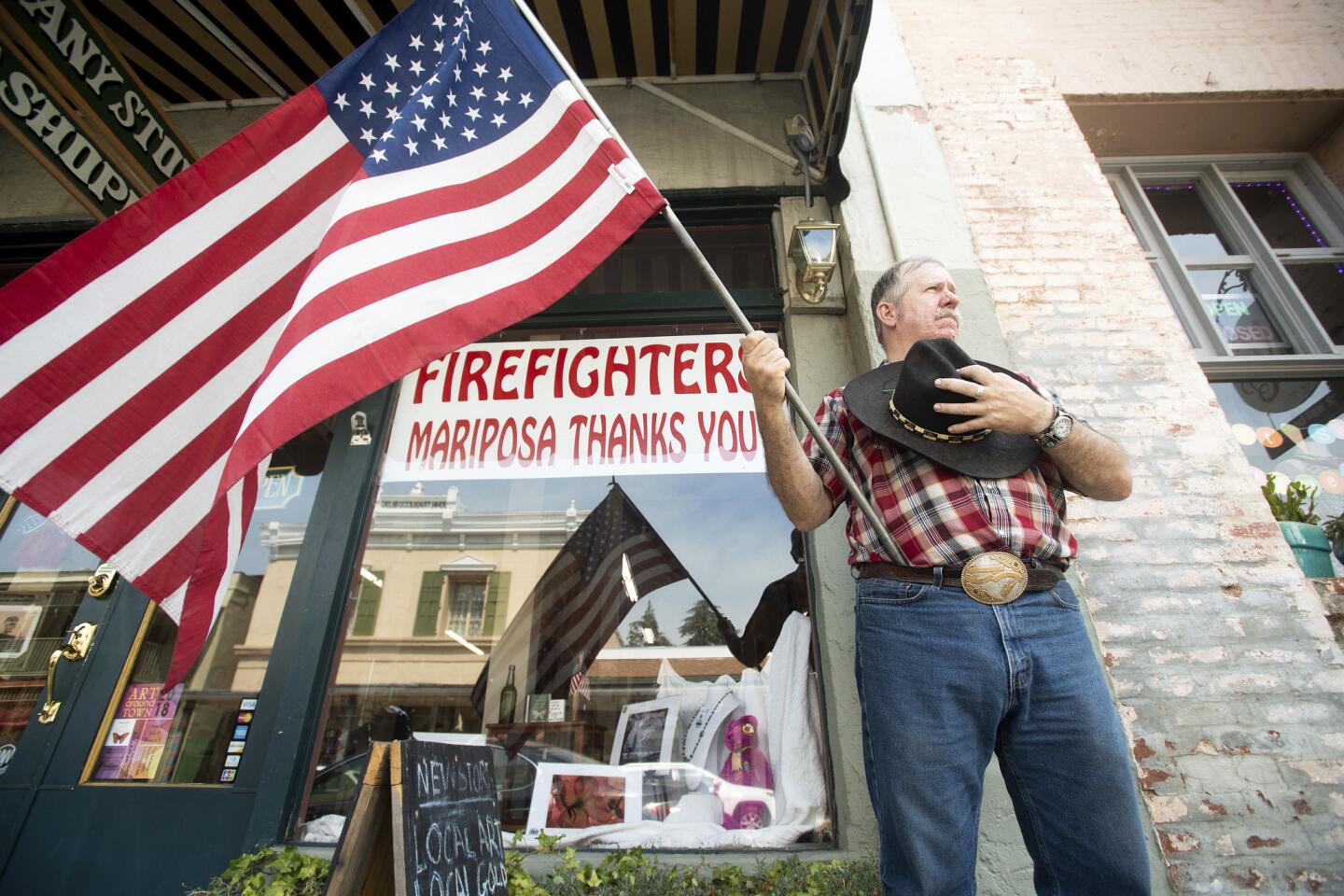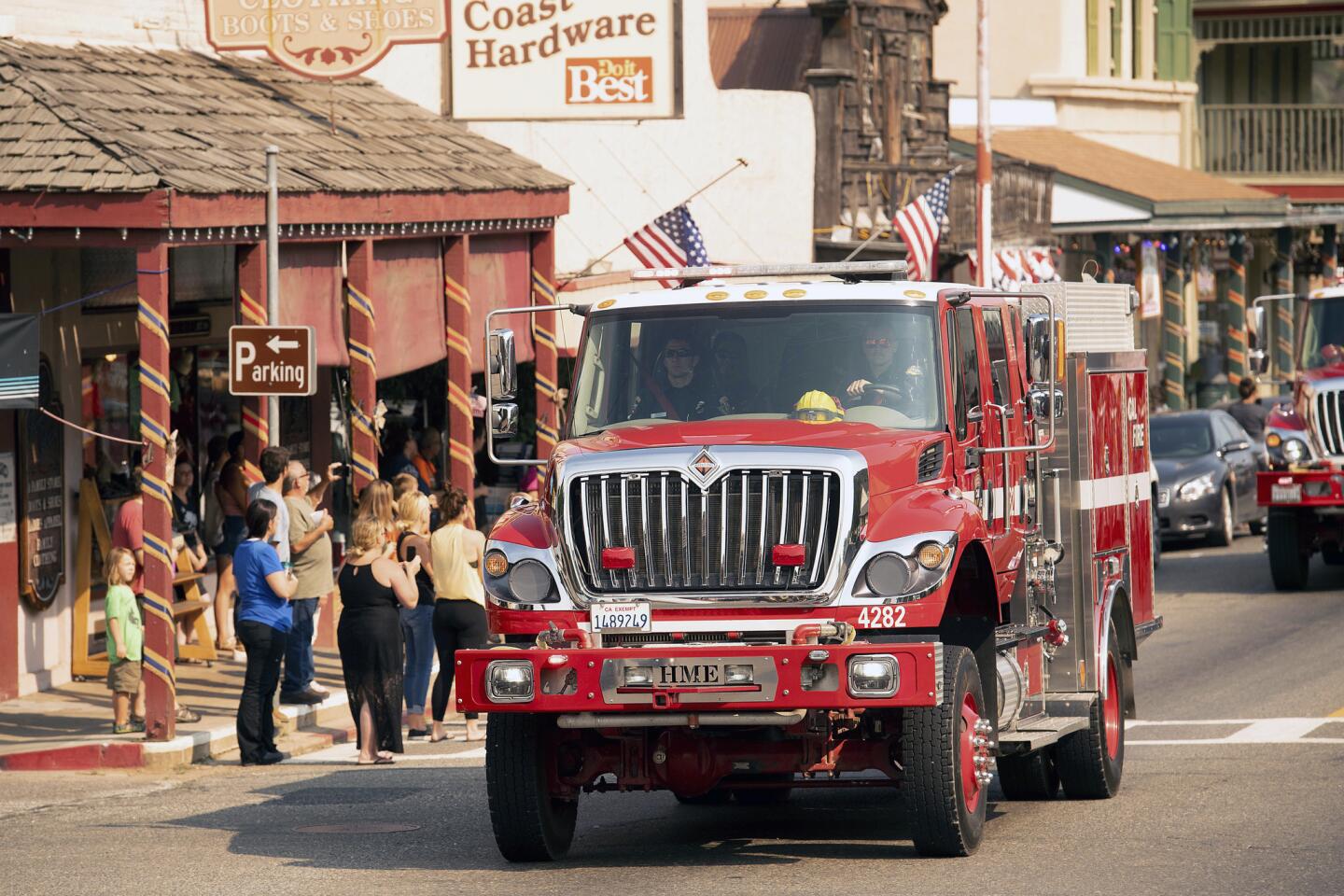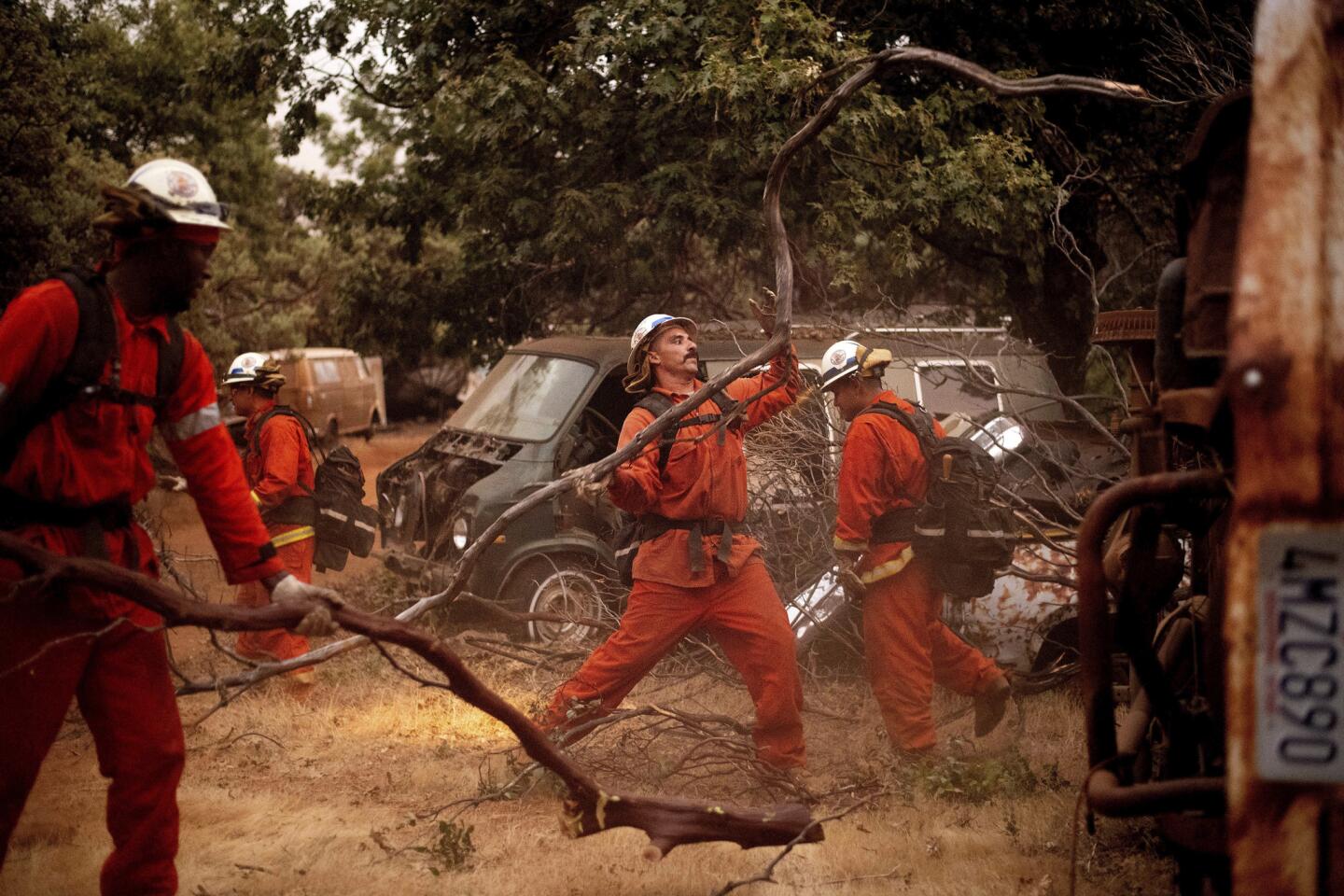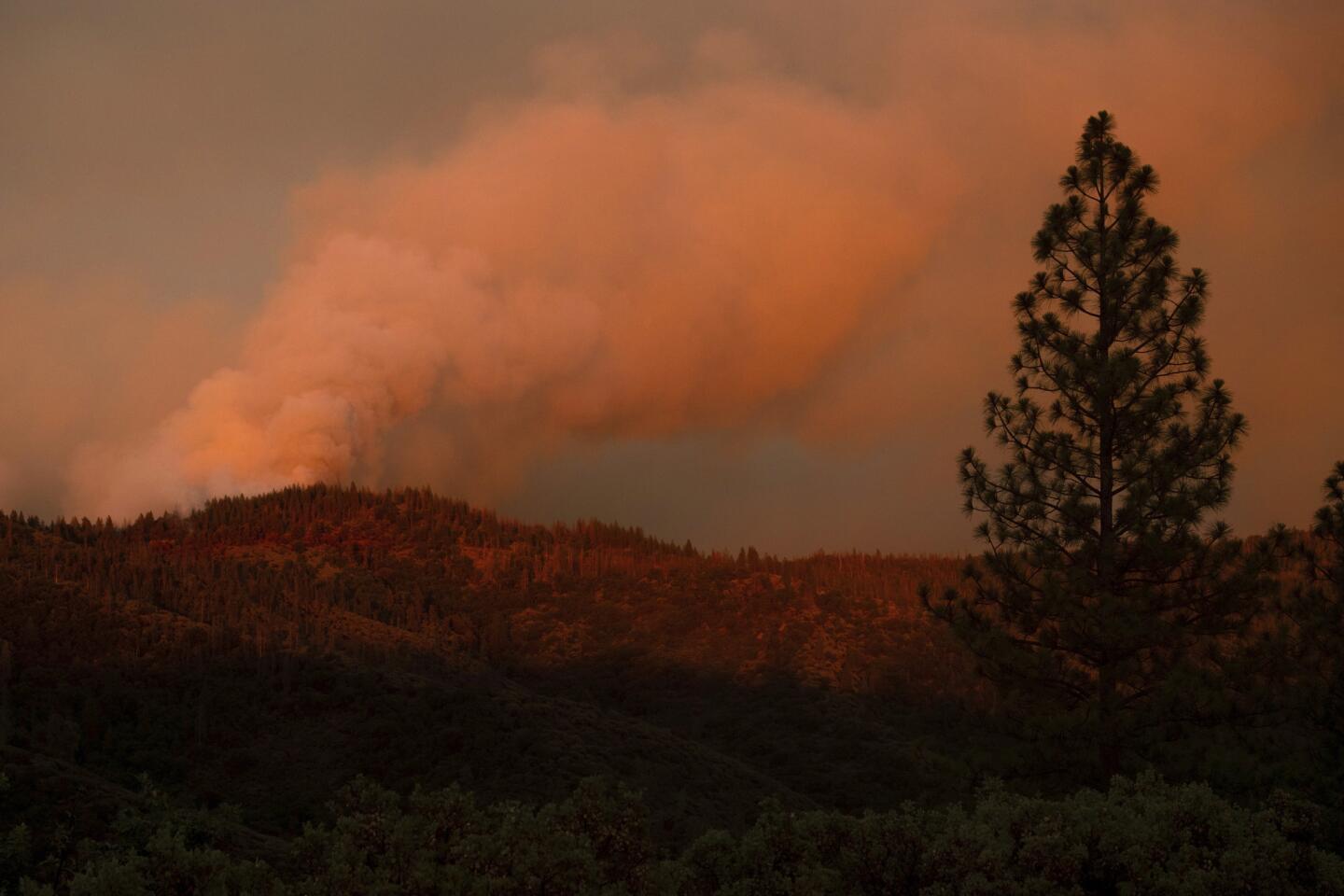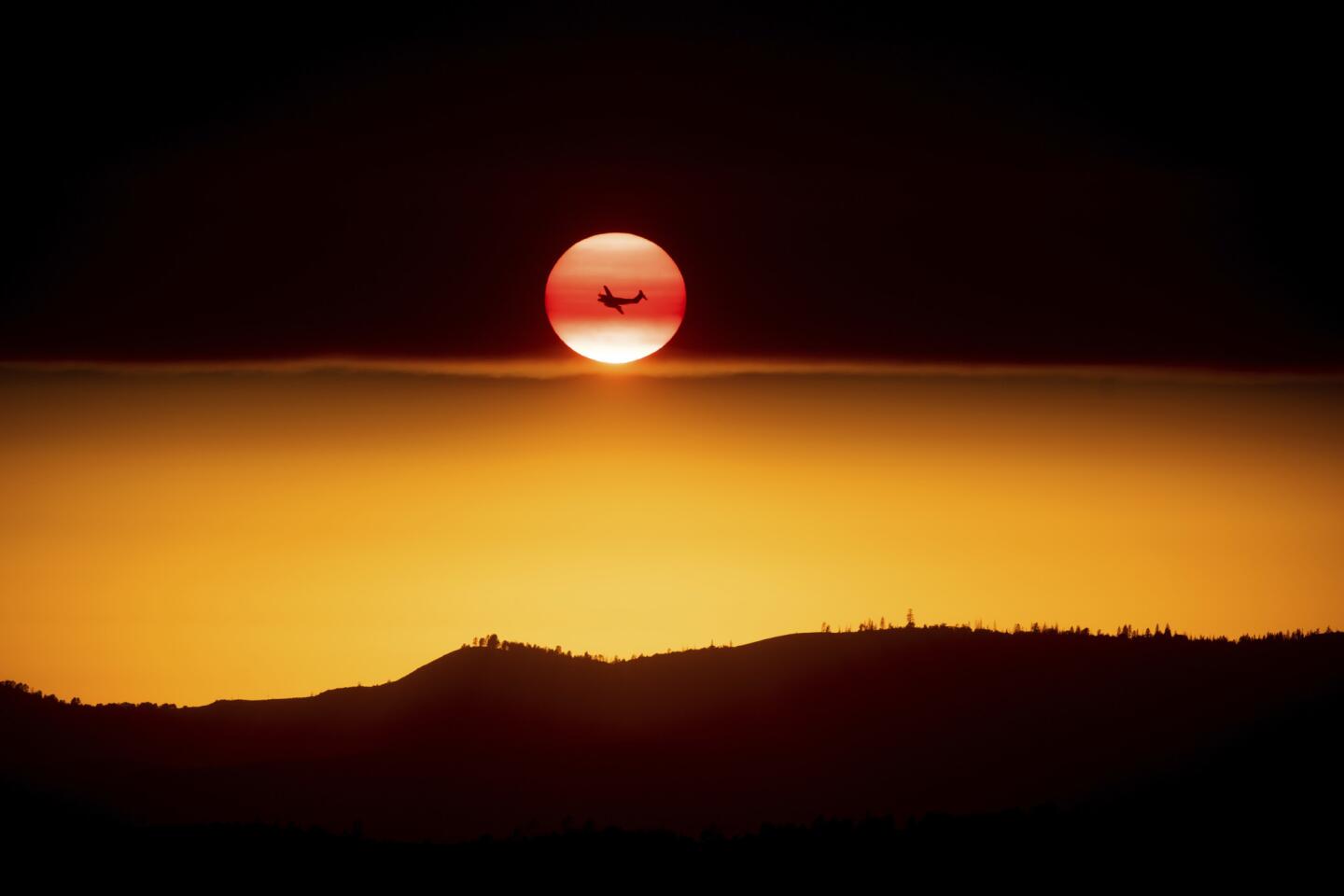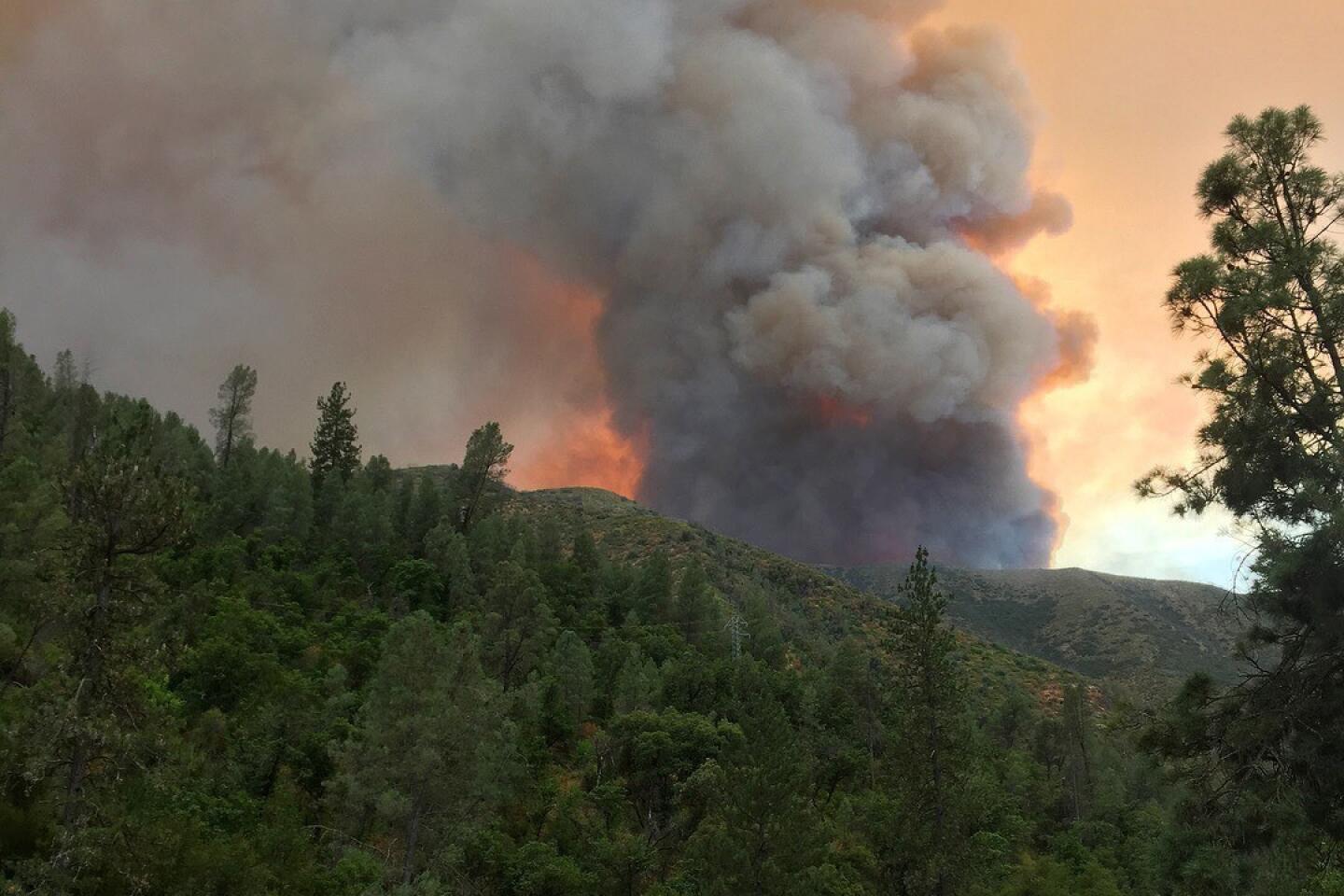Massive tree die-off brings unprecedented danger as wildfire burns near Yosemite
- Share via
The Ferguson fire burning through Mariposa County has already charred nearly 10,000 acres and killed a firefighter working the front lines.
But its true destructiveness might lie ahead as it burns a path through a tinderbox already primed for disaster.
For the record:
5:40 a.m. July 17, 2018This article states that the Detwiler fire started a few miles east of the Ferguson fire. It started to the west of the Ferguson fire.
On either side of the Merced River, hillsides are filled with trees that have been killed by five years of drought and a bark beetle infestation, according to state maps. The ground is carpeted with bone-dry pine needles, which are highly combustible. These conditions, combined with dry, hot weather, have officials fearful that the fire could grow far worse as it burns near Yosemite National Park.
Fire “moves very fast through dead needles, and dead trees produce a lot of dead needles,” said Mike Beasley, a fire behavior analyst for the U.S. Forest Service. “The dead pine needles, no matter where they end up, whether they’re still in the tree or draped in some old, decadent brush, or laying on the ground, they contribute significantly to rapid rates of spread.”
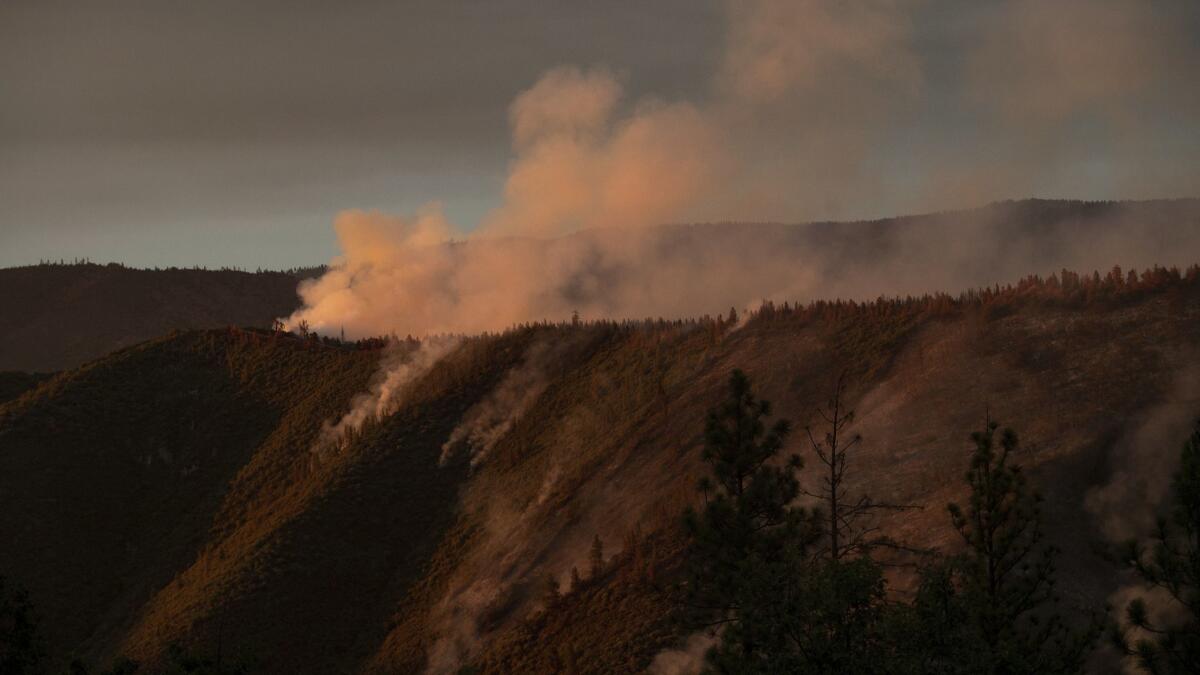
All those dead or dying trees also pose a major risk to firefighters. They’re a source of flying embers that can carry long distances in the wind, igniting spot fires, Beasley said.
“The biggest overall risk is that these dead trees have an increased risk of falling — themselves and their limbs falling on firefighters,” said Heather Williams, a California Department of Forestry and Fire Protection spokeswoman.
The tree die-off is one of many fire hazards heightened by California’s drought conditions. The state last year experienced the most destructive fire season in history, with dozens killed and thousands of homes lost from Northern California wine country down to Ventura and Santa Barbara counties. Those blazes were fueled by dry conditions and unusually powerful winds.
The U.S. Forest Service estimates that since 2010, more than 129 million drought-stressed and beetle-ravaged trees have died across 7.7 million acres of California forest, mostly in the Sierra. Authorities have said the beetle epidemic is rapidly killing trees in the 4,500-foot to 6,000-foot elevation band of the central and southern Sierra range. It could take centuries for the trees to repopulate, if they ever do.
Unlike last year’s firestorms in Santa Rosa, Ventura and Montecito, the Ferguson fire is not burning close to major population centers. Rather, it’s burning in steep terrain deep in forest areas, making it hard for firefighters to access. Some areas haven’t burned since 1927, leaving a heavy accumulation of fuels.
The blaze has scorched almost 10,000 acres since igniting Saturday, though the biggest growth occurred in the first two days.
“It hasn’t grown dramatically today,” Beasley said Monday. “I think we just had a temporary reprieve where the fuels were no longer in alignment with the wind.”
But officials fear that it could end up becoming a repeat of last year’s Detwiler fire, which burned for five months through dead forest and destroyed 63 homes. It started a few miles east of the Ferguson fire, burning on the edge of Mariposa. The Detwiler fire burned hotter than crews had seen in years and sent smoke floating as far north as Idaho, according to reports at the time.
A chance of thunderstorms in the high Sierra later this week could bring gusty, erratic winds to the Ferguson burn area, according to Modesto Vasquez, forecaster with the National Weather Service.
“Any kind of increase in winds like that is going to potentially make for an explosive situation,” Beasley said.
The Ferguson fire, which was only 2% contained as of Monday, is traveling along the south fork of the Merced River, between groves of trees that have died in the last two years, according to a state tree mortality map. In 2016 and 2017, about 89 million trees died statewide because of bark beetle infestations.
“In the long run, for the whole region, for the whole western slope of the southern Sierra, it poses a huge fire problem,” Beasley said.
Crews may have to trek into these dangerous patches of land if it means protecting nearby homes, Williams said.
Fire officials are planning on setting up defensive lines along the fire’s southern flank to prevent it from reaching the groves of dead trees, but they’ll be facing head winds to do so, according to the National Weather Service.
As is typical for the area, the light winds blowing north and northeast around the Ferguson fire Monday morning were expected to shift at night, when they will instead begin to push the fire southwest in the direction of Midpines, meteorologist Brian Ochs said.
Thus far, the fire has not damaged any structures. More than 100 buildings were threatened and evacuations remained in place in Briceburg, Cedar Lodge and Mariposa Pines north of Bear Clover.
Facing steep, inaccessible terrain in many spots, firefighters are attacking the flames directly where they can but are otherwise focusing on setting up lines where they plan to make stands against the flames.
To reduce the fire danger, Pacific Gas & Electric Co. on Sunday switched off power lines serving the area, affecting parts of Yosemite, El Portal and Foresta.
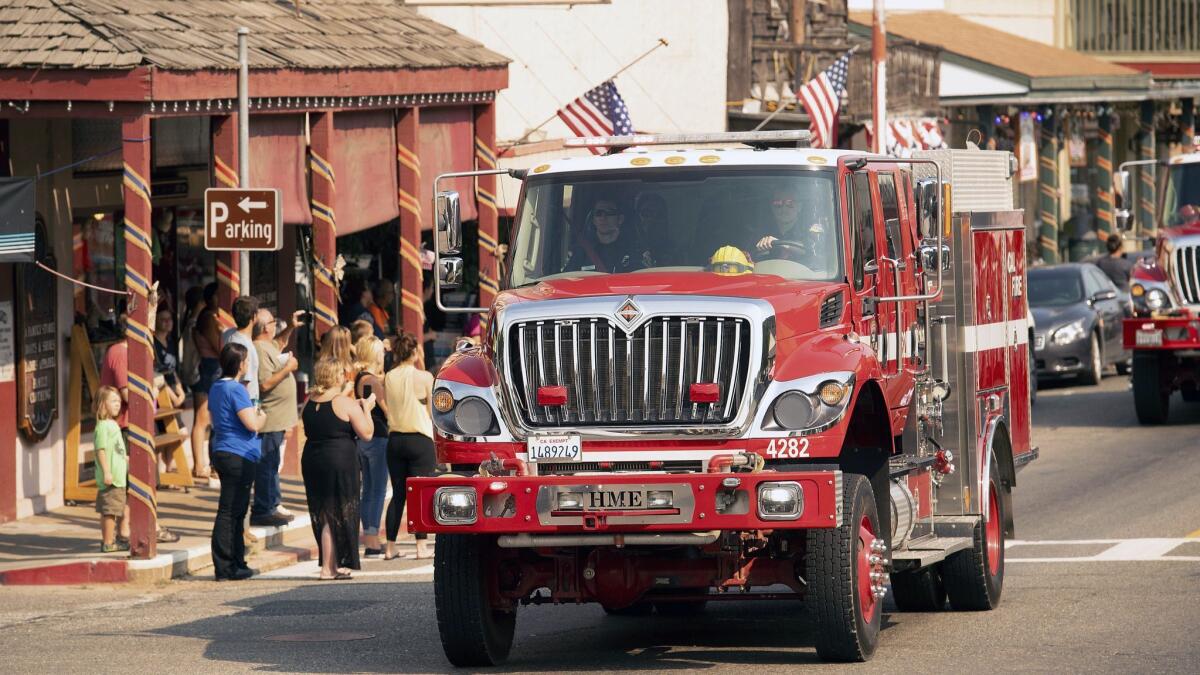
Braden Varney, a Cal Fire bulldozer operator, died at the scene as crews battled the fire early Saturday, Cal Fire spokesman Scott McLean said.
Varney, 36, of Mariposa had served in Cal Fire’s Madera-Mariposa-Merced Unit for a decade. He left behind a wife and two young children, the agency said.
His bulldozer tumbled down a steep canyon while he was cutting vegetation to protect Jerseydale in case the fire moved in that direction, Cal Fire spokesman Jeremy Rahn said Sunday.
Varney had started working at 8:30 p.m. Friday, and at some point radio contact with him was lost, Rahn said. He could not say whether the accident occurred in darkness or daylight, but he said it was not unusual for bulldozer operators to work in darkness.
“It’s common practice for the dozers to be working through the night,” Rahn said.
Varney was spotted from the air about 8 a.m. Saturday. A crew confirmed his death. But because of the inaccessible terrain, his body was not expected to be recovered until Monday at the earliest.
McLean said Varney’s death is still under investigation. Varney was working with teams trying to contain the fire when he was killed, McLean said. The area where firefighters were working is generally inaccessible, with rough and steep terrain.
Last year, firefighter Cory Iverson died of burns and smoke inhalation while battling the Thomas fire in Ventura County.
McLean said he couldn’t recall firefighter deaths coming so close together in California in many years.
“We’re talking very extreme fire behavior,” he said. “Everybody just needs to be so careful.”
Times staff writer Doug Smith contributed to this report.
More to Read
Sign up for Essential California
The most important California stories and recommendations in your inbox every morning.
You may occasionally receive promotional content from the Los Angeles Times.
